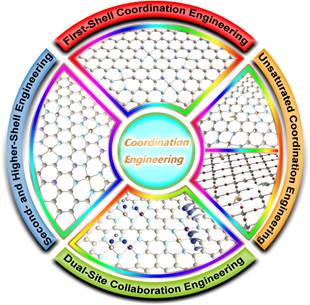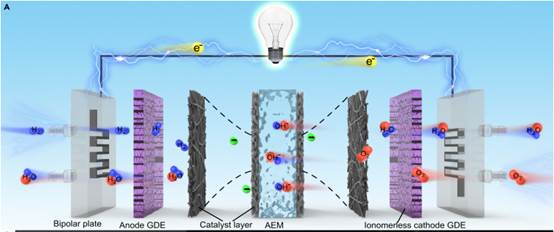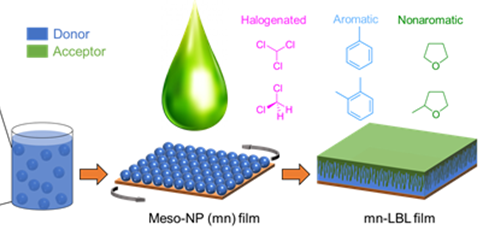Recently, young teachers from Shenzhen Technology University (SZTU) have made important breakthroughs in scientific research in catalyst materials, fuel cell engineering, green manufacturing and others. Research results have been published in important international journals.
1. Coordination engineering in single-site catalysts
The research team led by Dr. Yang Tao from Future Technology School has optimized the geometric and electronic structure of active sites by regulating the coordination environment of single-metal centers via the coordination engineering strategy, thereby promoting the overall catalytic performance of Single-site catalysts (SSCs).
SSCs have long been considered to be promising candidates for heterogeneous catalysis due to the maximum exposure of metal sites at the catalytic interface and the well-defined active-site structure. SZTU researchers proposed a new strategy for coordination engineering, providing a new way to optimize its catalytic performance.
The key role of advanced microscope and spectroscopy techniques in structure-performance relationship study is concisely introduced, with special emphasis on combining in situ characterizations and theoretical calculations during real-time catalysis. The research team also classified various coordination regulation strategies reported in the last decade into four basic categories, including first-shell coordination, second-/higher-shell coordination, unsaturated coordination, and dual-site collaboration engineering.

Regulating the coordination environments of SSCs via advanced coordination engineering strategies [Photo/https:// https://doi.org/10.1016/j.chempr.2023.08.014]
Dr. Yang Tao, as the co-first author, published an article titled “Coordination engineering in single-site catalysts: General principles, characterizations, and recent advances” in Chem, an internationally renowned materials science journal in January 2024. The full text of the article can be found at: https://doi.org/10.1016/j.chempr.2023.08.014.
2. Industrialization of ionomerless cathodes in the field of fuel cells
Dr. Yang Tao and his team have also made major breakthroughs in the field of fuel cells, which are expected to drive the industrialization of next-generation fuel cell technology. Dr. Yang has taken two years to tackle the technical problems of ionomerless cathodes and successfully applied it to the cathode of anion-exchange membrane fuel cells (AEMFCs). The research result was recently published in the top international energy journal Joule (IF: 39.8), titled “Anion-exchange membrane fuel cells with ionomerless cathodes”. The full text of the article can be found at: https://authors.elsevier.com/a/1ie1g925JENmUU.

Schematic illustration of H2–O2 AEMFCs with ionomerless cathodes [Photo/https://authors.elsevier.com/a/1ie1g925JENmUU]
This scientific research result provides an in-depth analysis of the paper “High-performance ionomerless cathode anion-exchange membrane fuel cells with ultra-low-loading Ag–Pd alloy electrocatalysts” published in Nature Energy recently. The researchers emphasized the importance of developing PGM (platinum group metals)-free catalysts and electrodes to completely avoid the use of expensive precious metals. It is expected to reduce the production cost of fuel cells and promote their industrialization process.
Detailed investigation on earth-abundant low-cost ionomerless cathodes based on other types of emerging catalytic materials, such as high-entropy alloys (HEAs), metal-organic frameworks (MOFs), single-atom catalysts (SACs), is encouraged to further boost AEMFC performance and unveil intrinsic structure-activity correlation. Moreover, research on the stability of AEMFC electrocatalysts/electrodes is relatively flawed, and adopting such new ionomerless cathode technology is of prodigious implication to uncover varied underlying deactivation/degradation mechanisms.
3. Highly efficient organic solar cells enabled by water-based layer-by-layer (LBL) processing
The properties of organic solar cells (OSCs), such as solution-printability, semitransparency, and lightweightness, make OSCs an alternative to the conventional silicon photovoltaics. Assistant Prof. Xie Chen from College of New Materials and New Energies and his team members have long been committed to optimizing the green processing technology of new photovoltaic devices. Recently, they demonstrated an eco-friendly water-based nanoparticle (NP) ink containing a donor to construct a mesostructured NP substrate for LBL processing for fabricating high-performance OSCs. They incorporated a water-processed mesostructured NP (mn) layer that allowed a thorough interdiffusion between the bottom and top layers during the solution-processing of the acceptor. An as-fabricated mn-LBL device delivered a PCE of 19.0% in the PM6: BTP-eC9 system (certified as 18.5%), making it one of the best results for binary LBL OSCs reported to date, especially for a donor layer based on water-processing.

Schematic diagram of the mesostructured-nanoparticle (mn) based layer-by-layer (LBL) polymer: NFA film processed by water and solvents for processing the acceptor layer [Photo/https://pubs.rsc.org/en/content/articlelanding/2024/ee/d4ee00068d]
This result was published in the internationally renowned journal Energy & Environmental Science (IF: 32.5), titled “Water-based layer-by-layer processing enables 19% efficient binary organic solar cells with minimized thickness sensitivity”. Assistant Prof. Xie Chen is the first author and co-corresponding author, Distinguished Professor Li Shunpu the co-corresponding author, and postgraduate student Zeng Xianghui the first author with equal contributions. SZTU is the first affiliation. The full text of the article can be found at: https://pubs.rsc.org/en/content/articlelanding/2024/ee/d4ee00068d.
Drafted by Daisy(姚琦)/ International Cooperation & Student Affairs Office
Revised by International Cooperation & Student Affairs Office
Edited by International Cooperation & Student Affairs Office
